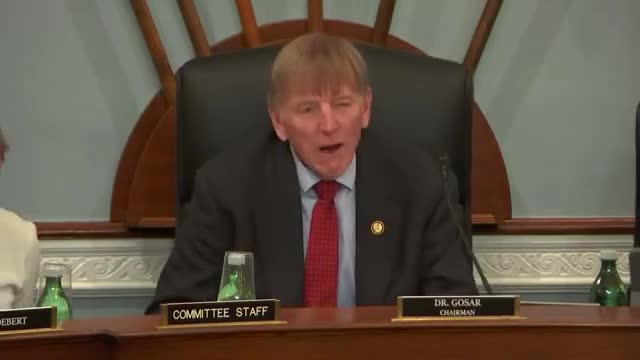Officials address wildfire crisis and urge reforms for forest management and community safety
May 16, 2025 | Natural Resources: House Committee, Standing Committees - House & Senate, Congressional Hearings Compilation
This article was created by AI summarizing key points discussed. AI makes mistakes, so for full details and context, please refer to the video of the full meeting. Please report any errors so we can fix them. Report an error »

In a recent oversight hearing held by the U.S. House Committee on Natural Resources, lawmakers addressed the escalating wildfire crisis in the United States, emphasizing the urgent need for effective forest management and community protection strategies. The discussions were framed by the tragic Yarnell Hill fire, which claimed the lives of 19 firefighters and highlighted the severe risks posed by wildfires to both natural ecosystems and urban communities.
The hearing revealed alarming statistics: over one billion acres of land across the U.S. are at risk of wildfires, with approximately 117 million acres owned by the federal government classified as high-risk. The average annual acreage burned by wildfires has surged to seven million, with nearly nine million acres consumed in 2024 alone. This dramatic increase is attributed to poor forest management practices, which have led to an accumulation of dry fuels and overcrowded forests, making them more susceptible to catastrophic fires.
Lawmakers underscored the financial implications of wildfires, which cost the U.S. economy between $394 billion and $893 billion annually. These costs encompass property damage, lost income, and contamination of water resources. The rising costs have made it increasingly difficult for homeowners in high-risk areas to obtain affordable insurance, with many facing skyrocketing premiums or being unable to secure coverage altogether.
The hearing also highlighted the importance of proactive forest management strategies, such as thinning and prescribed burns, which have shown promise in reducing wildfire risks. For instance, Arizona's 4 Forest Restoration Initiative has successfully treated over 200,000 acres, improving forest health and resilience while supporting the local timber industry. Lawmakers called for similar initiatives to be implemented nationwide, emphasizing the need to cut bureaucratic red tape that hinders effective forest management.
In contrast, some members expressed concern over policies that prioritize commercial logging at the expense of public safety, arguing that such practices can exacerbate wildfire risks. They advocated for a comprehensive, science-based approach to wildfire management that includes community safety measures and encourages the adoption of fire-resistant building techniques.
As the hearing concluded, lawmakers acknowledged the complexity of the wildfire crisis and the necessity for collaborative efforts among federal, state, and local entities. The discussions set the stage for ongoing dialogue about how to protect vulnerable communities and restore forest ecosystems, with a clear call to action for more robust and effective wildfire prevention strategies.
The hearing revealed alarming statistics: over one billion acres of land across the U.S. are at risk of wildfires, with approximately 117 million acres owned by the federal government classified as high-risk. The average annual acreage burned by wildfires has surged to seven million, with nearly nine million acres consumed in 2024 alone. This dramatic increase is attributed to poor forest management practices, which have led to an accumulation of dry fuels and overcrowded forests, making them more susceptible to catastrophic fires.
Lawmakers underscored the financial implications of wildfires, which cost the U.S. economy between $394 billion and $893 billion annually. These costs encompass property damage, lost income, and contamination of water resources. The rising costs have made it increasingly difficult for homeowners in high-risk areas to obtain affordable insurance, with many facing skyrocketing premiums or being unable to secure coverage altogether.
The hearing also highlighted the importance of proactive forest management strategies, such as thinning and prescribed burns, which have shown promise in reducing wildfire risks. For instance, Arizona's 4 Forest Restoration Initiative has successfully treated over 200,000 acres, improving forest health and resilience while supporting the local timber industry. Lawmakers called for similar initiatives to be implemented nationwide, emphasizing the need to cut bureaucratic red tape that hinders effective forest management.
In contrast, some members expressed concern over policies that prioritize commercial logging at the expense of public safety, arguing that such practices can exacerbate wildfire risks. They advocated for a comprehensive, science-based approach to wildfire management that includes community safety measures and encourages the adoption of fire-resistant building techniques.
As the hearing concluded, lawmakers acknowledged the complexity of the wildfire crisis and the necessity for collaborative efforts among federal, state, and local entities. The discussions set the stage for ongoing dialogue about how to protect vulnerable communities and restore forest ecosystems, with a clear call to action for more robust and effective wildfire prevention strategies.
View full meeting
This article is based on a recent meeting—watch the full video and explore the complete transcript for deeper insights into the discussion.
View full meeting